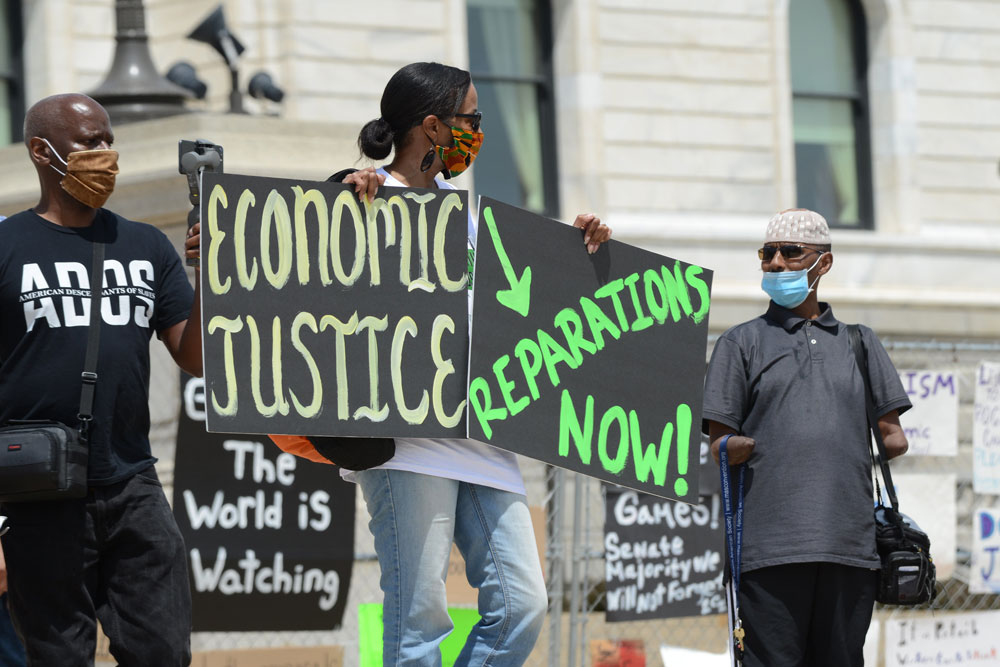
August 31, 2020; Candid
The National Committee on Responsive Philanthropy (NCRP) recently published “Black Funding Denied: Community Foundation Support for Black Communities,” which details the significant underfunding of Black-led organizations and focused efforts by Black community foundations.
Community foundations are different from other grantmaking organizations in the philanthropic sector. Beyond getting a greater public subsidy than private foundations, community foundations are focused on the entirety of their communities, rather than a certain cause or specific area. This ought to lead to an understanding of historic inequities that would justify funding Black-led and Black-focused efforts at a higher level than efforts for the general population, not a lower level. Yet the exact opposite remains true, even after years of research that points to the problem.
Cyndi Suarez wrote about the concept of placing equity at the center in grantmaking back in 2018 as a reaction to the philanthropic response to Hurricane Maria’s devastation of Puerto Rico. She wrote at the time that many of the foundations responding to that moment were taking a “decidedly power- and equity-neutral approach, and we are moving beyond that as a sector. When it comes to how to prioritize money that finds its way to the island to address social problems that, at their roots, boil down to power inequality and access to resources, it is important to consider those factors in the solutions.”
This frame is apparently not at play among this country’s community foundations, which are seated in communities where problems of unequal power and resources for the Black community are longstanding and acute.
In looking at the latest grantmaking data available (2016–2018) for 25 community foundations that represent some of the largest in the US and which are located in cities whose Black population averages 15 percent of the total, NCRP found a significant discrepancy between funding percentage and population percentage. For instance, Jackson, Mississippi is 49 percent Black, and the Community Foundation for Mississippi funded no specifically Black-oriented programs. Other foundations in the study include the Baton Rouge Area Foundation, which gave 3.2 percent to projects specific to the Black community which makes up 35 percent of Baton Rouge’s population, and the Greater Atlanta Community Foundation, which earmarked only 1.7 percent of its grants to projects specifically for Black residents, who constitute 34 percent of the city of Atlanta.
Sign up for our free newsletters
Subscribe to NPQ's newsletters to have our top stories delivered directly to your inbox.
By signing up, you agree to our privacy policy and terms of use, and to receive messages from NPQ and our partners.
In looking holistically at these 25 foundations, NCRP reported that only one percent of the foundations’ funding specifically benefited Black communities, which when put in dollars equates to the foundations funding $78 per person in the general population but only $6 per Black person. A reparations lens would show the need for that to be flipped.
Since 2016, these 25 foundations have been giving 13 times more to generally focused projects than to those specific to Black communities. This is so despite the fact that in 2016, the median wealth for white households was ten times that of Black households. If these 25 foundations had invested specifically in Black communities in equal amounts to that of the general population, then Black communities across the country would have had $2 billion more in funding—just since 2016.
These numbers are particularly disturbing when we as a country are facing an overdue reckoning with pervasive systemic racism that has led to communities of color 1) dying at exponentially higher rates from COVID-19 because they make up a greater number of low-wage essential workers; 2) experiencing higher levels of unemployment in the current recession; 3) facing potential homelessness on account of the related housing crisis which, as NPQ recently reported, is unduly affecting communities of color; and lastly suffering significantly higher rates of police brutality and death.
Even though many community foundations have been stepping up in these unprecedented times, as NCRP points out, “Even if community foundation giving for Black communities had tripled since 2018—which would represent a seismic shift in grantmaking priorities—it still would not even amount to four percent of all giving in these cities.”
These underlying, longstanding racial disparities in philanthropic funding across the US are precisely what the philanthropic sector needs to address as it seeks to advance racial equity and serve the millions who are disproportionately suffering in our current moment. As characterized by Denise St. Omer, vice president of grantmaking and inclusion initiatives at the Greater Kansas City Community Foundation, “NCRP’s report helps guide our work and inform our thinking on how we can raise awareness of the critical needs and structural barriers facing the Black community.”
As months of civil unrest and protests continue to tear away at the many layers of white supremacy that have undergirded public life since our country’s founding, NCRP challenges community foundations to no longer “redline by another name” by choosing to not prioritize Black-led, Black-focused efforts.—Ruth McCambridge













